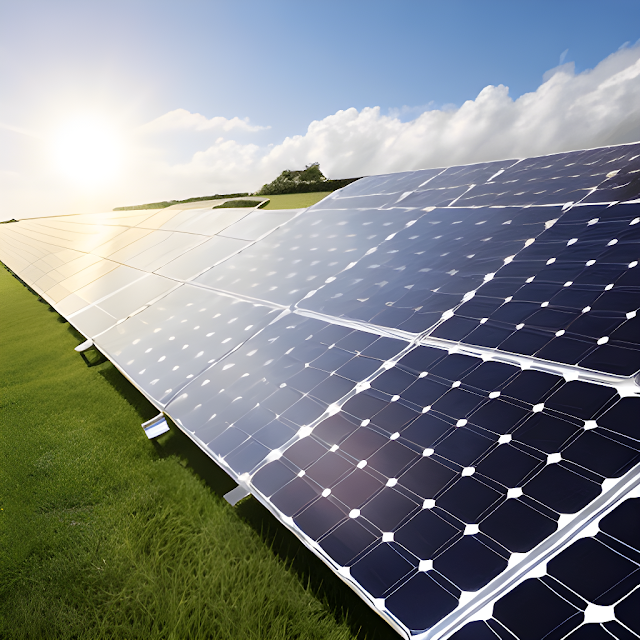Summary:
As the world continues to grapple with the challenges of climate change and the urgency of transitioning towards sustainable energy sources, the role of solar power in shaping our future energy landscape cannot be overstated. Solar energy has witnessed significant advancements and technological innovations, making it one of the most promising solutions to combat environmental degradation while meeting the rising global energy demand. This article delves into the remarkable progress in solar power technology and explores the potential of sustainability-focused innovations, laying the groundwork for a greener and more sustainable future.
Introduction:
The escalating climate crisis has pushed governments, industries, and communities worldwide to seek greener, sustainable alternatives to conventional fossil fuels. Among the plethora of renewable energy sources available, solar power has emerged as a leading contender, offering an eco-friendly and inexhaustible energy supply. This article delves into the future of solar power, examining the advancements in solar technology and the integration of sustainability-focused solutions, ultimately shaping the way we generate and consume energy in the coming years.
1. Advancements in Solar Photovoltaic Technology:
The field of solar photovoltaic (PV) technology has witnessed exponential growth over the past few decades, primarily driven by research and development initiatives, increased funding, and improved manufacturing processes. Some noteworthy advancements include:
a. High-Efficiency Solar Cells: Scientists and engineers have focused on enhancing solar cell efficiency, leading to the development of advanced materials like perovskite solar cells and multi-junction solar cells. These innovations have resulted in higher energy conversion rates and increased electricity output from a smaller surface area.
b. Bifacial Solar Panels: Traditional solar panels only capture sunlight from one side, but bifacial solar panels can utilize sunlight reflected from surfaces beneath them. This feature significantly improves energy generation and enhances the overall efficiency of the solar system.
c. Transparent Solar Cells: Researchers are working on creating transparent solar cells that can be integrated into windows and building facades, transforming them into energy-generating surfaces without obstructing natural light.
d. Flexible and Lightweight Solar Panels: The development of flexible and lightweight solar panels has expanded the possibilities for solar integration into various applications, such as clothing, backpacks, and portable devices, making solar energy more accessible and versatile.
2. Energy Storage Solutions:
One of the most significant challenges of solar power is its intermittent nature due to variations in sunlight availability. However, advancements in energy storage technologies have been crucial in overcoming this hurdle, ensuring a steady supply of energy even when the sun is not shining. Key developments in energy storage solutions include:
a. Lithium-ion Batteries: Widely used in various applications, lithium-ion batteries have experienced substantial progress in terms of cost reduction and energy density, making them more viable for large-scale energy storage systems.
b. Flow Batteries: Flow batteries offer the advantage of decoupling power and energy capacity, enabling efficient and scalable energy storage for grid applications.
c. Thermal Energy Storage: In certain solar power systems, excess energy is used to store heat, which can later be converted back into electricity during periods of low sunlight.
d. Power-to-Gas Technology: This innovative approach involves converting excess solar electricity into hydrogen through electrolysis, which can then be used for various purposes, including power generation or as a clean fuel for transportation.
3. Solar Integration in Urban Spaces:
As urbanization accelerates, incorporating solar power into urban spaces becomes imperative to ensure sustainable energy consumption. Innovative solar integration in cities includes:
a. Solar Roof Tiles: Solar roof tiles blend seamlessly with traditional roofing materials, enabling homeowners to harness solar energy without compromising the aesthetics of their homes.
b. Solar Canopies: Solar canopies installed in parking lots, public spaces, and transportation hubs not only generate clean energy but also provide shade and protection from the elements.
c. Vertical Solar Farms: Vertical solar farms on building facades and sound barriers along highways optimize land use in densely populated areas, contributing to the overall urban sustainability effort.
4. Solar Farms and Floating Solar Installations:
Solar farms, large-scale arrays of solar panels, have become more prevalent in rural areas due to their ability to generate significant amounts of clean energy. Additionally, floating solar installations on water bodies have gained popularity as they provide an innovative solution for land-constrained regions and offer the added advantage of reducing water evaporation.
5. Sustainability Technology Integration:
Apart from advancing solar technology itself, the integration of sustainability-focused technologies complements and enhances solar energy systems' efficiency and environmental benefits. Some key sustainability technology integrations include:
a. Internet of Things (IoT) and AI: IoT devices and artificial intelligence play a pivotal role in optimizing solar power systems by monitoring performance, predicting maintenance needs, and adjusting output based on energy demand and weather conditions.
b. Smart Grids: The incorporation of smart grids enables efficient two-way communication between energy producers and consumers, allowing for better load management, energy balancing, and grid stability.
c. Electrification of Transportation: As the transportation sector accounts for a significant portion of global emissions, integrating solar energy into electric vehicle charging infrastructure contributes to reducing carbon footprints.
Conclusion:
The future of renewable energy hinges significantly on the progress and widespread adoption of solar power advancements and sustainability technology. As the world seeks cleaner and more sustainable energy solutions, solar energy continues to shine as a beacon of hope. With continued research, innovation, and supportive policies, solar power has the potential to drive a greener, more sustainable energy landscape, helping us combat climate change and create a brighter future for generations to come.

Post a Comment for "The Future of Renewable Energy: Exploring Solar Power Advancements and Sustainability Technology"